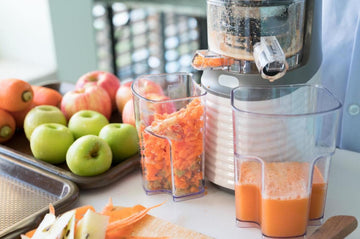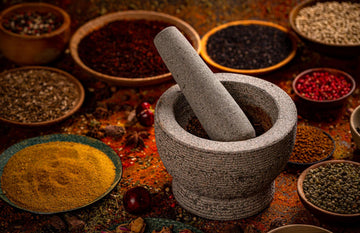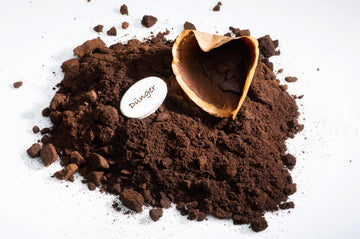Juicing: one glass can pack in more produce than most people eat in a day. No cooking, no meal planning, just wash, chop, juice, drink.
This guide covers what juicing actually is, which equipment you need, and how to juice different produce without destroying your machine. You'll learn which combinations taste good (and which taste like liquid grass), plus practical tips for making juicing affordable and sustainable. Let's start with what juicing actually means.
What is Juicing?
Juicing extracts liquid from fruits and vegetables, leaving behind the pulp, skin, and fiber. Unlike blending, which keeps everything in the drink, juicing separates the juice from the solid parts. You get a thin, nutrient-concentrated liquid that your body absorbs quickly.
The process breaks down cell walls in produce, releasing vitamins, minerals, and enzymes. A juicer uses spinning or pressing force to separate juice from fiber. What's left is pure liquid nutrition - no chewing required.
Why juicing
People turn to juicing for simple reasons. You can consume more produce than you'd ever eat whole. Two large carrots, an apple, a cucumber, and a handful of spinach becomes one manageable glass. Try eating all that in one sitting.
Juicing works for picky eaters who hate vegetables. Mix that bitter kale with sweet pineapple and suddenly it's drinkable. Parents sneak vegetables into their kids' fruit juices. Adults mask greens they'd never touch on a plate.
Digestion becomes easier. Without fiber to break down, your gut absorbs nutrients faster. People with digestive issues often handle juice better than whole produce. The nutrients hit your bloodstream within minutes, not hours.
Benefits of juicing
-
Immediate nutrient absorption. Your body doesn't work to break down fiber. Vitamins and minerals enter your bloodstream in about 15 minutes versus 2-3 hours for solid food.
-
Increased produce intake. The average American eats 1.5 cups of vegetables daily. One juice can contain 4-5 cups worth. You'll consume produce combinations you'd never eat whole.
-
Better hydration. Fresh juice contains structured water from plants plus electrolytes and minerals. It hydrates better than plain water for many people.
-
Reduced food waste. Those slightly soft apples, wilting greens, and ugly carrots become perfectly good juice. Use produce before it spoils.
-
Energy without caffeine. Green juices provide steady energy from B vitamins and natural sugars. No crash like coffee. No jitters.
Easier nutrition for seniors and sick people. Those who struggle with chewing or have poor appetite can still get nutrition. Cancer patients often rely on fresh juices when solid food is difficult.
Juicing 101: How to juice fruits and different groceries
Hard vegetables and roots

Start with hard vegetables - they juice best and yield the most liquid. Carrots go straight through any juicer. No need to peel unless they're really dirty. Cut into 3-inch pieces.
Beets stain everything but juice beautifully. Wear gloves. Cut off the tops and scrub well. Quarter them for easier juicing. Mix with apple or lemon to cut the earthy taste.
Celery is juicing gold. High water content, mild flavor, cheap. Cut into 2-inch pieces. The strings won't hurt your juicer. Save the leaves - they're nutrient-dense but bitter, so use sparingly.
Ginger needs just a 1-inch knob per juice. Don't peel it. The skin contains beneficial compounds. Run it through with harder vegetables to extract maximum juice.
Sweet potatoes juice surprisingly well. Creates creamy, sweet juice. Always peel these - the skin is too tough. Mix with apple and cinnamon for a pie-flavored drink.
Leafy greens
Greens need special handling. They're low in water, so juice them between water-rich vegetables. Make a "sandwich" - cucumber, then greens, then apple. This pushes the greens through.
Spinach is the mildest green. Baby spinach barely tastes like anything when mixed with fruit. Pack it tight before feeding into the juicer. One huge handful yields maybe 2 ounces.
Kale is nutrient-dense but bitter. Remove thick stems - they're too fibrous. Curly kale juices better than flat-leaf varieties. Balance with pineapple or orange.
Swiss chard, collard greens, and dandelion greens all juice well. Start with small amounts. These are acquired tastes. Parsley and cilantro add bright flavor but use just a handful - they're potent.
Roll greens into tight balls before juicing. Or wrap them around cucumber spears. This prevents them from flying around in the juicer without extracting juice.
Citrus fruits

Peel citrus but leave the white pith. The pith contains bioflavonoids and pectin. It's bitter but nutritious. If you hate bitter, remove it all.
Oranges juice easily once peeled. Valencia oranges are best for juice - they're literally juice oranges. Navel oranges work but yield less liquid.
Grapefruits need careful peeling. The peel oils are especially bitter. Pink and red grapefruits are sweeter than white. Mix with apple to mellow the tartness.
Lemons and limes - use sparingly. A half lemon brightens any juice. Whole lemons overpower everything. Never juice the peel unless you want furniture polish flavor.
Soft fruits
Apples are the universal mixer. They make everything taste better. Granny Smith adds tartness, Fuji adds sweetness, Gala is neutral. Core them if juicing daily (seeds contain trace cyanide).
Pears juice like apples but create thicker liquid. They're very sweet. Slightly underripe pears juice better than soft ones. Remove stems but keep the skin.
Pineapple transforms vegetable juices. The enzymes aid digestion. Cut off skin and hard core. The core is edible but tough on juicers. Fresh pineapple beats canned every time.
Grapes juice easily but they're basically sugar water. Use red grapes for antioxidants. Remove from stems. Frozen grapes work when fresh aren't available.
Tomatoes create thick, pulpy juice. Roma tomatoes have less water, more flavor. Remove stems. Mix with celery, pepper, and hot sauce for virgin bloody mary.
Vegetables that need caution
Broccoli and cauliflower can be juiced but taste terrible alone. Use just a few florets. They're very nutritious but also very cruciferous - expect gas.
Bell peppers juice well but dominate flavors. Red peppers are sweetest. Remove seeds and white membranes. Quarter pepper maximum per juice.
Cabbage juices efficiently but tastes like liquid coleslaw. Purple cabbage is slightly better. Use 1-2 leaves maximum. Good for gut health, terrible for taste.
Onions - just don't. Unless you're making a savory juice, skip them. Even a small piece ruins fruit juices. Garlic is the same story.
Water-rich vegetables
Cucumbers are perfect base vegetables. Mild flavor, high yield, cheap. English cucumbers have fewer seeds. Peel if waxed, otherwise keep skin.
Zucchini juices like cucumber but creamier. Use young, small zucchini. Large ones are mostly seeds and water. Good for adding bulk without strong flavor.
Watermelon juices beautifully. Remove green skin, keep white rind (nutrients). Seeds are fine in most juicers. Pure watermelon juice is summer in a glass.
Herbs and specialty items
Fresh turmeric stains worse than beets. Wear gloves, protect surfaces. Use 1-inch piece maximum. Powerful anti-inflammatory but tastes medicinal.
Wheatgrass requires special juicers or attachments. Regular juicers can't handle it. Tastes exactly like lawn clippings. Mix with apple and lemon to make it bearable.
Fresh herbs juice poorly alone. Add mint to fruit juices, basil to tomato juices. Cilantro pairs with lime and jalapeño. Use herbs as accent, not base.
Jalapeños and hot peppers - remove seeds unless you want fire juice. A tiny slice adds kick to vegetable juices. Wash hands immediately after handling.
Order matters
Juice soft items first, then hard items to push everything through. Or alternate - soft, hard, soft, hard. This maximizes extraction.
Save stringy items like ginger and herbs for the middle of your juicing session. Follow with hard vegetables to clear the machine.
End with water-rich items like cucumber or apple. They flush out remaining juice from the machine. Run the pulp through twice if it's still wet - you're leaving juice behind.
Troubleshooting common problems
Foaming happens with certain produce. Apples foam most. Let juice sit 30 seconds and foam settles. Or skim with spoon. Add lemon to reduce foaming.
Separation is normal. Juice isn't homogenized. Stir or shake before drinking. Drink within 15 minutes for best nutrition - oxidation destroys vitamins.
Bitter juice usually means too many greens or citrus pith. Balance with apple, pineapple, or carrots. Start with 75% fruits, 25% vegetables until you adjust to the taste.
Pulp too wet means you're juicing too fast or your juicer needs cleaning. Slow down. Clean the filter basket. Some juicers just extract poorly - you get what you pay for.
Necessary equipment
Choosing a juicer
-
You need a juicer. Blenders make smoothies, not juice.
-
Centrifugal juicers ($50-200) - Fast, loud, good for beginners. Bad with leafy greens.
-
Masticating juicers ($200-400) - Slow, quiet, better yield. Handles all produce well.
-
Manual juicers ($20-50) - Citrus only. Hand-powered.
Essential tools
-
Sharp knife and cutting board
-
Fine mesh strainer (for pulp-free juice)
-
Glass containers (juice reacts with plastic)
-
Produce brush for scrubbing
Start juicing today
Juicing isn't complicated - people make it complicated. Start with apple, carrot, lemon and master that combination before attempting kale-turmeric-wheatgrass concoctions. Your taste buds need adjustment time. Most beginners quit because they dive straight into bitter green juices. Build gradually. Clean your juicer immediately after each use - dried pulp becomes cement and cleanup frustration kills more juicing habits than anything else.
Fresh juice won't cure cancer or melt away 30 pounds. It's simply an efficient method to consume more produce. Buy ugly fruits and vegetables at half price from farmers markets - your juicer doesn't discriminate against cosmetic imperfections. Drink juice within 15 minutes for maximum nutrients, or add lemon to slow oxidation if you must store it.
Start with one juice daily, preferably morning on an empty stomach for optimal absorption. Focus on building the habit before increasing frequency. Stop overthinking, stop researching, stop planning. Buy a juicer, buy some produce, make some juice. You'll figure out the rest through experience.





